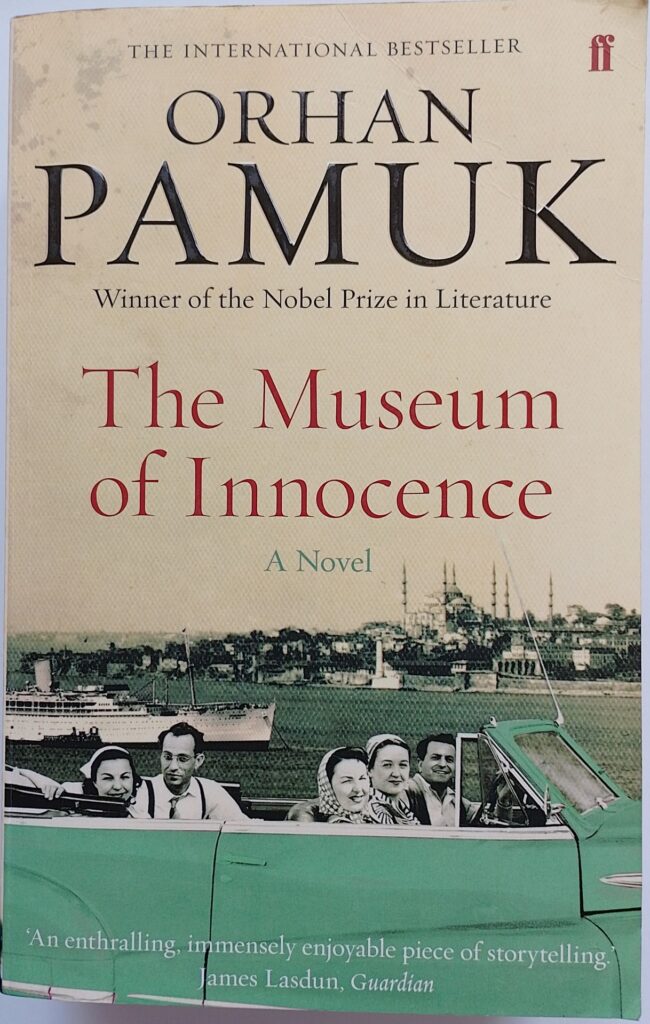First published 2009. Faber paperback, translated by Maureen Freely, 2010, pp 734, c.230,000 words.
OK, so you’ve just won the Noble Prize in Literature, what are you going to do next? As the worst health care is given to the very poor and the very rich, so with editorial help. No one is going to say anything is wrong with your book because they know it is going to sell well regardless, and all those agents, publishers and book sellers don’t want you to take your offering elsewhere if they suggest there might be the teeniest bit wrong with your next book. Most critics are going to shy away from exposing their claws for fear of being thought to be a Philistine for criticising a Noble Prize winner.
Unfortunately this book is a bore. A very beautifully written book, but a very boring read. When someone writes “Knowing visitors to my museum must by now be sick and tired of my heartache…’ (p248) they must know that something is wrong with what has gone before. Sadly Pamuk is no story teller, and there is very little story in this 734-page doorstop. It is supposedly a story about love, but actually it’s about a rich playboy who pursues a sexual obsession to ridiculous and unbelievable ends. Surely love means trying to please the object of your love and not to try and keep it in a cage (rather obvious symbolism of a caged canary). The protagonist is a dull narcissist. Almost all the other 147 characters listed in the index are more interesting (it would have been helpful if something of their relationships were included in the index rather than the page numbers on which they appear.) I made a note on page 625: “Füsun speaks!” because this was the first occasion when I had any impression that the object of the protagonist’s obsession had any independent thoughts of her own.
The Financial Times critic quoted on the back cover wrote: “Pamuk has created a work concerning romantic love worthy to stand in the company of Lolita, Madam Bovary and Anna Karenina.” Rubbish. They are all tales of sexual obsession, not romantic love. Madam Bovary and Anna Karenina really try to understand women’s love and realistically fill out their interior worlds, something Pamuk fails to do. In his story, Women are mere objects controlled by men, both in the book and in the society about which he writes.
What Pamuk excels at is description of time and place, notably the Istanbul of the 1970s to the present day. No one is better at evoking the atmosphere of a restless city. The sad loss of places of memory, the life and movement of the present, the changing weather and seasons, and the impact of the these on people and place. Pamuk is the grand master of evoking feeling for a particular moment and location. I’d rather read him than Proust or Dickens in this regard. His prose is beautiful, lyrical stylish and yet unforced and eminently readable. The translation is fluent, articulate and graceful.
Don’t read this, read Istanbul instead. That will give you all the beauty of Pamuk’s style without the grinding bore of the story. Sadly, The Museum of Innocence joins My Name is Red and Snow as examples of Pamuk’s poor storytelling. To be engaging, a novel must have a good story at its heart.
© William John Graham, May 2022

